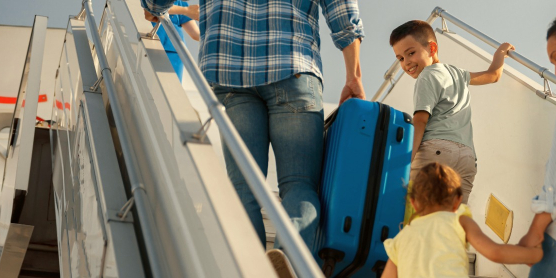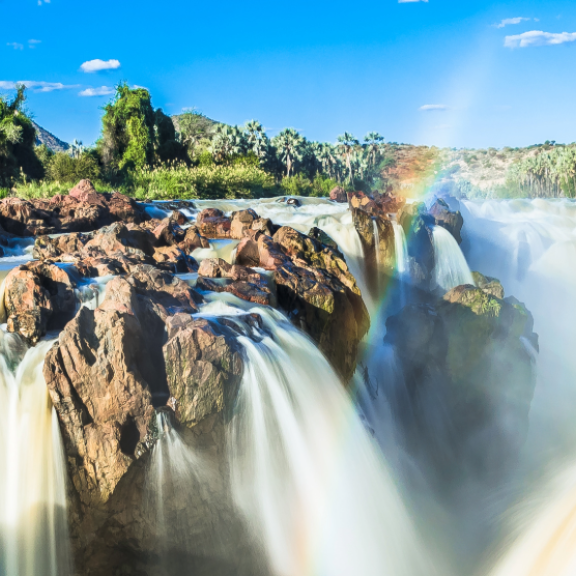
Emigrating to Namibia
Emigrate to Namibia: Find out the most important information for your stay here
Namibia is a country in southwestern Africa characterized by the Namib Desert along its Atlantic coast. The country is home to diverse wildlife, including a significant number of cheetahs. The capital Windhoek and the coastal town of Swakopmund are home to German colonial architecture, such as the Christuskirche in Windhoek, which was built in 1907. In the north lies the Etosha National Park, whose salt pan attracts many wild animals such as rhinos and giraffes. For people who want to emigrate to Namibia, the country offers a fascinating mix of breathtaking nature, rich wildlife and cultural heritage.
Facts about Namibia
Capital City
Windhoek
Population
2.57 million
Surface Area
512,191.30 mi² or 824,292 km²
Continent
Africa
Official Language
English, German, Afrikaans
Currency
Namibia Dollar (N$)
Emigrating to Namibia: An overview of the political system
Namibia is a democratic nation with a semi-presidential system based on the 1990 constitution - an important aspect for anyone wishing to emigrate to Namibia. The constitution guarantees basic human rights and freedoms, including freedom of thought, speech, press, religion and assembly. It attaches great importance to equality between men and women and prohibits discrimination, inhumane treatment, the death penalty and slavery. Namibia is thus oriented towards Western democracies and is considered a role model on the African continent. Namibia's pioneering role in environmental protection is particularly attractive for emigrants: it was one of the first countries in the world to enshrine the protection of the environment as a national objective in its constitution. The Ministry of Environment and Tourism promotes sustainable development and the conservation of the country's unique natural resources - a forward-looking approach that makes Namibia a popular destination.
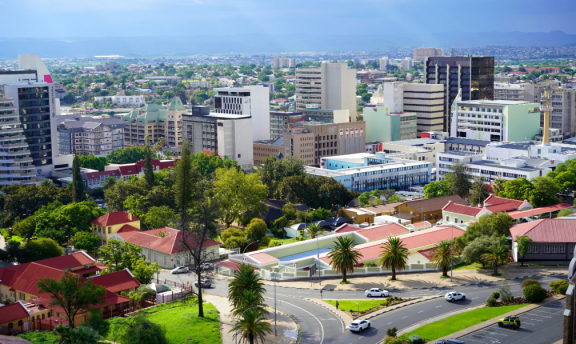
Climate in Namibia: Important information for emigrants
Namibia's climate is subtropical-continental, which means that it is very dry and hot - a decisive factor for anyone wishing to emigrate to Namibia. With almost 300 days of sunshine per year and intense solar radiation, Namibia is one of the most arid regions in the world. The annual rainfall of around 250 mm is considerably lower than in Germany, where the average rainfall is 1,000 mm. Rain falls in Namibia almost exclusively in the summer months from November to March, mostly in the form of heavy thunderstorms. One exception is the Caprivi Strip in the north-east of the country, which has an alternately humid climate and up to 650 mm of rainfall per year. Anyone planning to live in Namibia should be prepared for the extreme but fascinating climate.
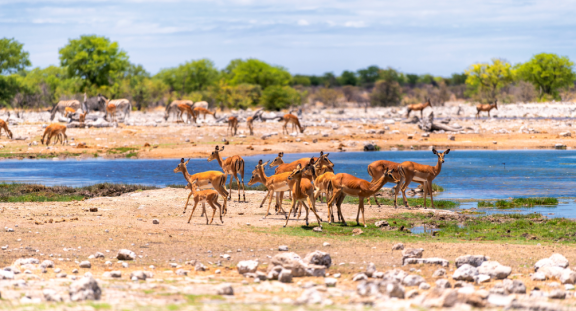
Healthcare system in Namibia: Important facts for emigrants
Namibia offers a hygienic environment, which is particularly attractive to those looking to emigrate to Namibia. Compared to other African countries, Namibia is known for its cleanliness, which reduces the risk of illness during relocation. Nevertheless, the risk of falling ill during the move remains higher than at home. Medical care in Namibia is of a high standard, especially in cities such as Windhoek or Swakopmund, where hospitals and doctors are easily accessible. In remote areas, helicopters are often used in the event of accidents, as the distances are often too great for ambulances. Before moving to Namibia, you should definitely seek medical advice, e.g. from a tropical institute, health department, hospital or your family doctor, to update your vaccination record and health care.

Emigrating to Namibia: An overview of the economic situation and quality of life
In Namibi, the gross domestic product per capita amounted to 4,409.96 US dollars in 2024. The Gini coefficient of wealth describes the distribution of wealth. The indicator is an established, internationally comparable measure of wealth inequality. It is measured on a scale from zero to one. The higher the value, the greater the inequality. The Gini coefficient in Namibia is expected to be 0.58 in 2025 (source: Statista).
Namibia offers many special features that make it an attractive destination for emigrants, investors and the self-employed. These include political stability, a low crime rate and a pleasant climate. The cultural links with Germany also help German-speaking immigrants to quickly feel at home: There is a German community of around 20,000 native speakers, German schools, bakeries and daily newspapers - even the beer is brewed according to the German purity law. The low cost of living and tax advantages, such as the withholding tax principle, no capital gains, gift or wealth taxes and the double taxation agreement with Germany, also make Namibia interesting from a financial perspective. For people who want to emigrate to Namibia, these factors are often decisive, as they offer a comfortable and economically attractive basis for living.
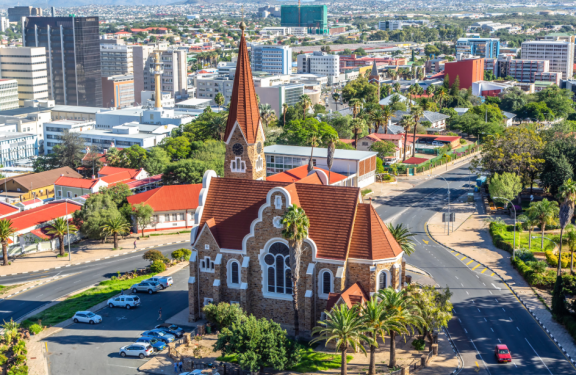
National holiday
Independence Day
Big Daddy Dune - Sossusvlei in the Namib Desert
The highest sand dunes in the world are located in Namibia, which for many is a fascinating aspect of emigrating to Namibia. These impressive dunes are located in the Namib Desert and surround the famous Sossusvlei, a dried-up salt lake. The lake only fills with water, sometimes up to several meters deep, during particularly rainy periods - a rare natural spectacle. The highest dune in the Namib Desert, known as the "Big Daddy Dune", attracts adventure-seekers and nature lovers alike. This unique natural wonder makes Namibia a special destination for expatriates who are inspired by spectacular landscapes.
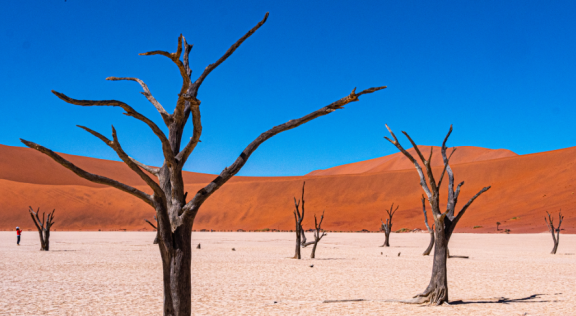
Emigrate to Namibia - Entry Requirements
Entry is possible for German nationals with the following documents:
- Passport: Yes
- Temporary passport: Yes
- Identity card: No
- Temporary identity card: No
- Children's passport: Yes
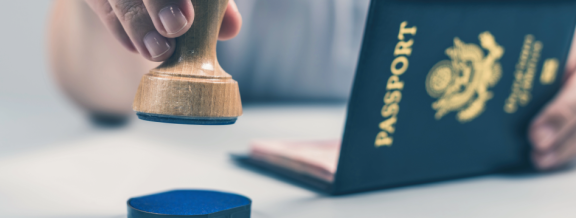
FAQs for emigrating to Namibia
Where can I find relevant information about my country of entry and the entry regulations that apply there?
We have compiled destination country information as well as entry requirements and customs information for many countries in the Relocation Service section of our website and are constantly expanding this section.
Can I use my own container that I already own for the move with DACHSER & KOLB?
For every removal, which we at DACHSER & KOLB always offer as a door-to-door (full service) removal, a container is rented for the duration of the removal. We therefore do not offer the option of using your own container.
Who is responsible for my move abroad and the services I need there?
As a FIDI member, we work abroad with selected, long-standing partners who work in accordance with our service standards.
Are my removal goods insured in the event of damage?
For every overseas move, we naturally cover transportation insurance at current value for the used household goods and personal belongings
What types of transportation do you offer for overseas relocation?
It is generally possible to carry out overseas removals via air freight or sea freight. In the case of sea freight, it is possible to ship the removal goods as additional cargo (“LCL shipment” with Liftvan) or with a container (FCL shipment in 20 feet, 40 feet or 40 feet high cube). We will be happy to discuss which option is best for you in a personal consultation.
When and how must the move be paid for and what is the payment deadline?
You will receive an invoice a few weeks after placing the order and pay the full amount directly in advance.
Do I have to pay taxes and customs duties on my removal goods?
Removal goods can be imported tax and duty-free into most countries if you have a valid residence permit. We will be happy to check the options for importing the removal goods for your desired destination country in a personal consultation.
Are you interested in moving to Namibia or another destination country?
Then do not hesitate and contact us today.
Sabrina Klier
Customer Service & Sales - AIR & SEA



